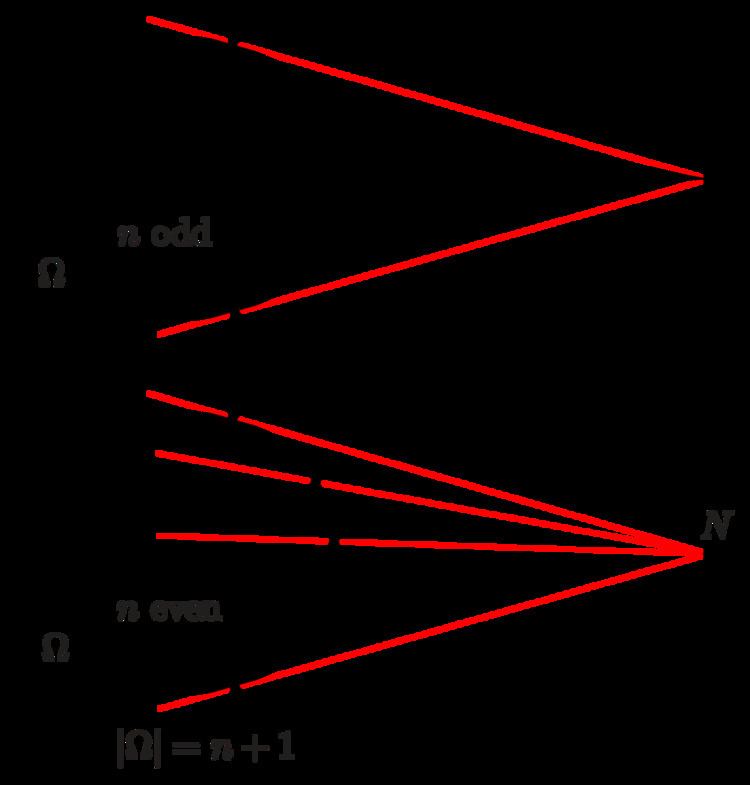 | ||
In projective geometry Qvist's theorem, named after the Finnish mathematician Bertil Qvist, is a statement on ovals in finite projective planes. Standard examples of ovals are non-degenerate (projective) conic sections. The theorem gives an answer to the question How many tangents to an oval can pass through a point in a finite projective plane? The answer depends essentially upon the order (number of points on a line −1) of the plane.
Contents
Definition of an oval
- Any line l meets Ω in at most two points, and
- For any point P ∈ Ω there exists exactly one tangent line t through P, i.e., t ∩ Ω = {P}.
When | l ∩ Ω | = 0 the line l is an exterior line (or passant), if | l ∩ Ω | = 1 a tangent line and if | l ∩ Ω | = 2 the line is a secant line.
For finite planes (i.e. the set of points is finite) we have a more convenient characterization:
Statement and proof of Qvist's theorem
Let Ω be an oval in a finite projective plane of order n.
(a) If n is odd,every point P ∉ Ω is incident with 0 or 2 tangents.(b) If n is even,there exists a point N, the nucleus or knot, such that, the set of tangents to oval Ω is the pencil of all lines through N.(a) Let tR be the tangent to Ω at point R and let P1, ... , Pn be the remaining points of this line. For each i, the lines through Pi partition Ω into sets of cardinality 2 or 1 or 0. Since the number | Ω | = n + 1 is even, for any point Pi, there must exist at least one more tangent through that point. The total number of tangents is n + 1, hence, there are exactly two tangents through each Pi, tR and one other. Thus, for any point P not in oval Ω, if P is on any tangent to Ω it is on exactly two tangents.
(b) Let s be a secant, s ∩ Ω = {P0, P1} and s= {P0, P1,...,Pn}. Because | Ω | = n + 1 is odd, through any Pi, i = 2,...,n, there passes at least one tangent ti. The total number of tangents is n + 1. Hence, through any point Pi for i = 2,...,n there is exactly one tangent. If N is the point of intersection of two tangents, no secant can pass through N. Because n + 1, the number of tangents, is also the number of lines through any point, any line through N is a tangent.
Using inhomogeneous coordinates over a field K, | K | = n even, the set
Ω1 = {(x, y) | y = x2} ∪ {(∞)},the projective closure of the parabola y = x2, is an oval with the point N = (0) as nucleus (see image), i.e., any line y = c, with c ∈ K, is a tangent.
Definition and property of hyperovals
One easily checks the following essential property of a hyperoval:
This property provides a simple means of constructing additional ovals from a given oval.
For a projective plane over a finite field K, | K | = n even and n > 4, the set
Ω1 = {(x, y) | y = x2} ∪ {(∞)} is an oval (conic section) (see image),Ω1 = {(x, y) | y = x2} ∪ {(0), (∞)} is a hyperoval andΩ2 = {(x, y) | y = x2} ∪ {(0)} is another oval that is not a conic section. (Recall that a conic section is determined uniquely by 5 points.)